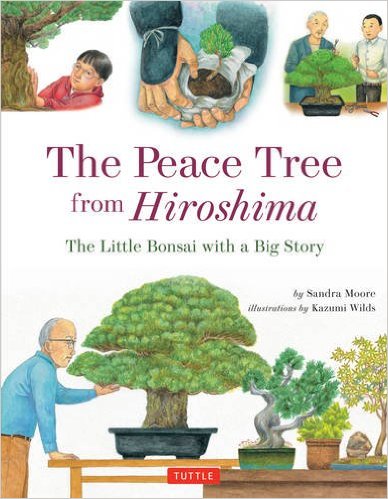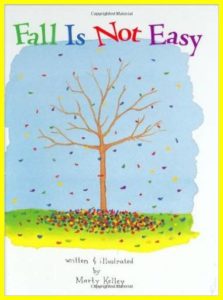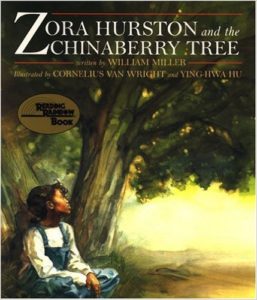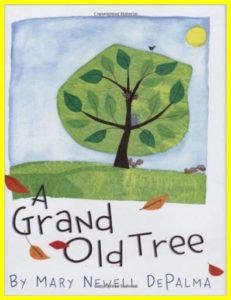Mary Hoffman, author of the highly acclaimed Amazing Grace picture book series, has written a powerful book about families: The Great Big Book of Families. This book is big both in physical size and in scope. It depicts a comprehensive range of diversity: how they look, who they can include, where they live, how they connect with one another, and the challenges they face together. She gently makes the point that regardless of their individual challenges or differences, families are valuable and important to each other.
Originally published in 2011, it ranks number 14 on Amazon. I assert that this proves that readers are hungry for books that respect and include diversity.
The Great Big Book of Families fills a need for children to see their life experiences reflected in the books they read. Kids need this affirmation. Equally important, it opens a window onto the life experiences of others whose family appearances or circumstances may differ from the child’s personal experiences. [bctt tweet=”As children gain a broader view of the world, their empathy, tolerance. and sense of exclusion expands. #ValueDiversity #GlobalCitizens #EmpathyKindnessTolerance” username=”GayleHSwift”]. The benefit of this inclusiveness is significant.
Ros Asquith’s lively illustrations respectfully depict an inclusive range of differences in looks, circumstances, or challenges. While some of the differences are the ones which easily and quickly come to mind, others are more unusual, especially in a picture book. The text mentions a variety of homes in which people live and even mentions that some people struggle to find homes and some are homeless. This is done without judgment or finger-pointing. Similarly, it talks about jobs: “In some families, everyone has a job. In others, only one person goes to work. Some parents work from home. And some can’t get a job at all.”
These are the kind of realities that kids actually face. This book offers the chance for children to further explore these hard truths with the adults in their lives. Some other topics mentioned include holidays, foods, clothes, pets, transportation, feelings, and family trees.
The Great Big Book of Families serves up an important chance to open children’s eyes. [bctt tweet=”Our experience of life does not define the standard for what is “right” or “better” or the only way that is acceptable or good. #TeachToleranceSeekJustice” username=”GayleHSwift”]. This book would make a great addition to the family, classroom or school, or public library as a way to teach tolerance and acceptance.
 AQ Lens: As mentioned in many previous book reviews, adoptees routinely experience feelings of being different from children who remain with their biological families. It’s a topic with which they wrestle throughout their lifetimes. Reading a book like this helps them to see that other children and families also experience some sense of otherness. The Great Big Book of Families can trigger conversations about differences and may open the door to discussions about a child’s deep feelings about family, adoption, and acceptance. (Remember, however, never dismiss the loss of one’s first family as trivial or insignificant.)
AQ Lens: As mentioned in many previous book reviews, adoptees routinely experience feelings of being different from children who remain with their biological families. It’s a topic with which they wrestle throughout their lifetimes. Reading a book like this helps them to see that other children and families also experience some sense of otherness. The Great Big Book of Families can trigger conversations about differences and may open the door to discussions about a child’s deep feelings about family, adoption, and acceptance. (Remember, however, never dismiss the loss of one’s first family as trivial or insignificant.)
Welcome to #DiverseKidLit ! Please join us in sharing your diverse children’s book links and resources, as well as visiting other links to find great suggestions and recommendations.
What Is #DiverseKidLit?
Diverse Children’s Books is a book-sharing meme designed to promote the reading and writing of children’s books that feature diverse characters. This community embraces all kinds of diversity including (and certainly not limited to) diverse, inclusive, multicultural, and global books for children of all backgrounds. We encourage everyone who shares to support this blogging community by visiting and leaving comments for at least three others. Please also consider following the hosts on at least one of their social media outlets. Spread the word using #diversekidlit and/or adding our button to your site and your diverse posts.

We hope this community serves as a resource for parents, teachers, librarians, publishers, and authors!
#DiverseKidLit is Hosted by:
Blog / Twitter / Facebook / Pinterest / Instagram
Instagram Myra @ Gathering Books Blog / Twitter / Facebook / Pinterest / Instagram / GoodreadsShoumi Sen, Author of Toddler Diaries Blog / Twitter / Facebook
Want to be notified when the next #diversekidlit linkup goes live? Click here to join the mailing list. Interested in joining as a host or an occasional co-host? Contact Katie at thelogonauts.com.
(Never participated in a linkup before? Please click here for a more detailed step-by-step.)
Get #DiverseKidLit Recommendations on Pinterest!
Our Pinterest board highlights a wide range of amazing posts and resources for Diverse Children’s Books. Please consider following the board for even more great books!
Share Your Link 






 A Grand Old Tree
A Grand Old Tree